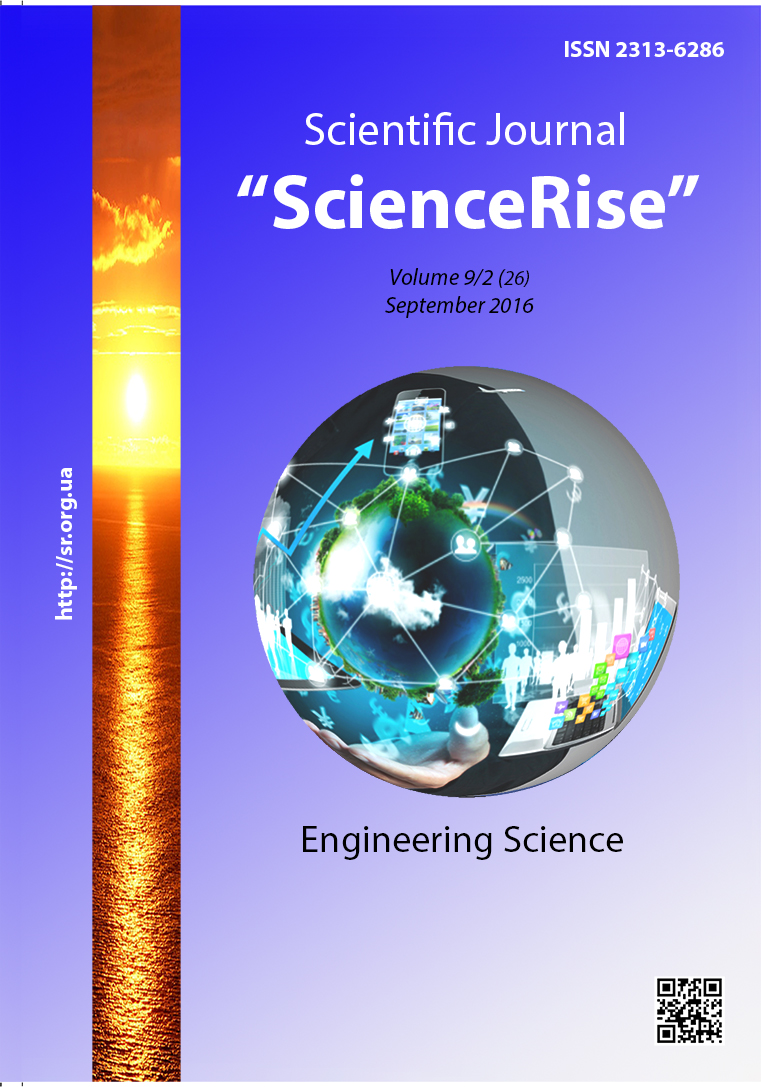Research of rheological and physico-mechanical properties of decorative concrete
DOI:
https://doi.org/10.15587/2313-8416.2016.78438Keywords:
geocement binder, additives, decorative concrete, pigments, plasticity, compression, strength, process viscosity, microwave drying, structureAbstract
The results of experimental researches of rheological and physico-mechanical properties of geocement-based decorative concrete are shown. The optimum composition of the material is defined. It is determined that introduction of the ground limestone in the concrete increases the stabilization time of process viscosity and additives Murasan BWA 21 contributes to the preservation of the geometric dimensions of the samples in the process of pulling out. Bending strength and frost resistance with a significant decrease in water absorption are increased after microwave drying.
References
Frank, G. A., Ambarcumjan, R. G., Geller, Je. M. (1977). Experience in producing decorative concrete on the basis of ordinary cement and ordinary aggregates. Technology decorative cements and concretes. Novocherkassk, 62–63.
Krasulina, L. V., Potapova, I. L. (2013). Decorative facing materials from modified fine concrete. Proc. Intern. Scientific method. Seminar "Issues of design standards and standards of the European Union in the field of construction". Minsk: Belarusian National Technical University, 95–103.
Dedenеva, О. B., Demina, O. I., Rachkovskij, A. V., Romanchuk, N. A., Klimova, E. I. (2016). Application of decorative fine-grained concretes for small architectural forms. Collection Naukova Prace Harkіvskogo unіversitetu Povіtryanih Forces, 3 (48), 108–111.
Fox, J. (2009). Concrete Staining Adds Color to Flooring. Sioux City Journal.
Primachenko, A. S., Meteljuk, V. A., Moskalenko, A. A., Tiholaz, E. V., Trofimova, I. A. (2016). High-quality decorative concrete. Resursoekonomni materials, structures, buildings and facilities. Rivne National University of Water Management and Nature, 32, 98–104.
Nasvik, J. (2006). Using Metakaolin in Decorative Concrete Mixes. Concrete Construction, 51 (8), 52.
Kuzminа, V. P. (2000). The pigments for the paint industry. J. Building materials, 10, 46–47.
Trofimov, V. I., Kramar, L. I. (2010). Analysis of the synthetic pigments properties for architectural concrete. Bulletin of the South Ural Technical University, 15, 36–38.
Kramar, L. I., Trofimov, V. I., Dobrovol'skij, I. P. (2012). Iron oxide pigments for decorative concrete. Bulletin of the South Ural Technical University, 17, 51–55.
Dudar, I. N. (1989). Hardening of cement paste under pressure. J. Cement, 7, 10–14.
Sokolov, V. G. (1994). The durability of the pressed concrete. J. Building materials, 10, 22–26.
Krivenko, P., Cao, H. L., Weng, L. Q., Kаvalerova, Е. (2014). Mineralogical Aspects of Durable Geocement Matrix Formation – Role of Alkali. Advanced Materials Research, 1004–1005, 1523–1530. doi: 10.4028/www.scientific.net/amr.1004-1005.1523
Chiara, L. (2009–2010). Sviluppo di nuovi materiali geopolimerici per l'applicazione nel settore dei beni culturali. Alma Mater Studiorum – Università di Bologna. Anno Accademico, 131.
F. Pacheco-Torgal (Ed.) et. al. (2014). Handbook of Alkali-activated Cements, Mortars and Concretes. Woodhead Publishing in Elsevier, Oxford, UK. doi: 10.1016/B978-1-78242-276-1.50032-0
Guzij, S. G. (2011). Geocementy i materialy na ih osnove. Strategija kachestva v promyshlennosti i obrazovanii. Bolgarija, 1, 86–89.
Guzii, S. G., Krivenko, P. V., Kirichok, V. І., Kravchenko, A. V., Manak, Ja. (2013). Research rheology modified geocement. Construction materials and sanitary equipment: Proc.-Tech. Coll., 48, 89–93.
Downloads
Published
Issue
Section
License
Copyright (c) 2016 Сергей Григорьевич Гузий, Светлана Анатольевна Теренчук

This work is licensed under a Creative Commons Attribution 4.0 International License.
Our journal abides by the Creative Commons CC BY copyright rights and permissions for open access journals.
Authors, who are published in this journal, agree to the following conditions:
1. The authors reserve the right to authorship of the work and pass the first publication right of this work to the journal under the terms of a Creative Commons CC BY, which allows others to freely distribute the published research with the obligatory reference to the authors of the original work and the first publication of the work in this journal.
2. The authors have the right to conclude separate supplement agreements that relate to non-exclusive work distribution in the form in which it has been published by the journal (for example, to upload the work to the online storage of the journal or publish it as part of a monograph), provided that the reference to the first publication of the work in this journal is included.

